19.11.2022
NASA's Artemis I Orion capsule set to break records on month-long journey around the moon
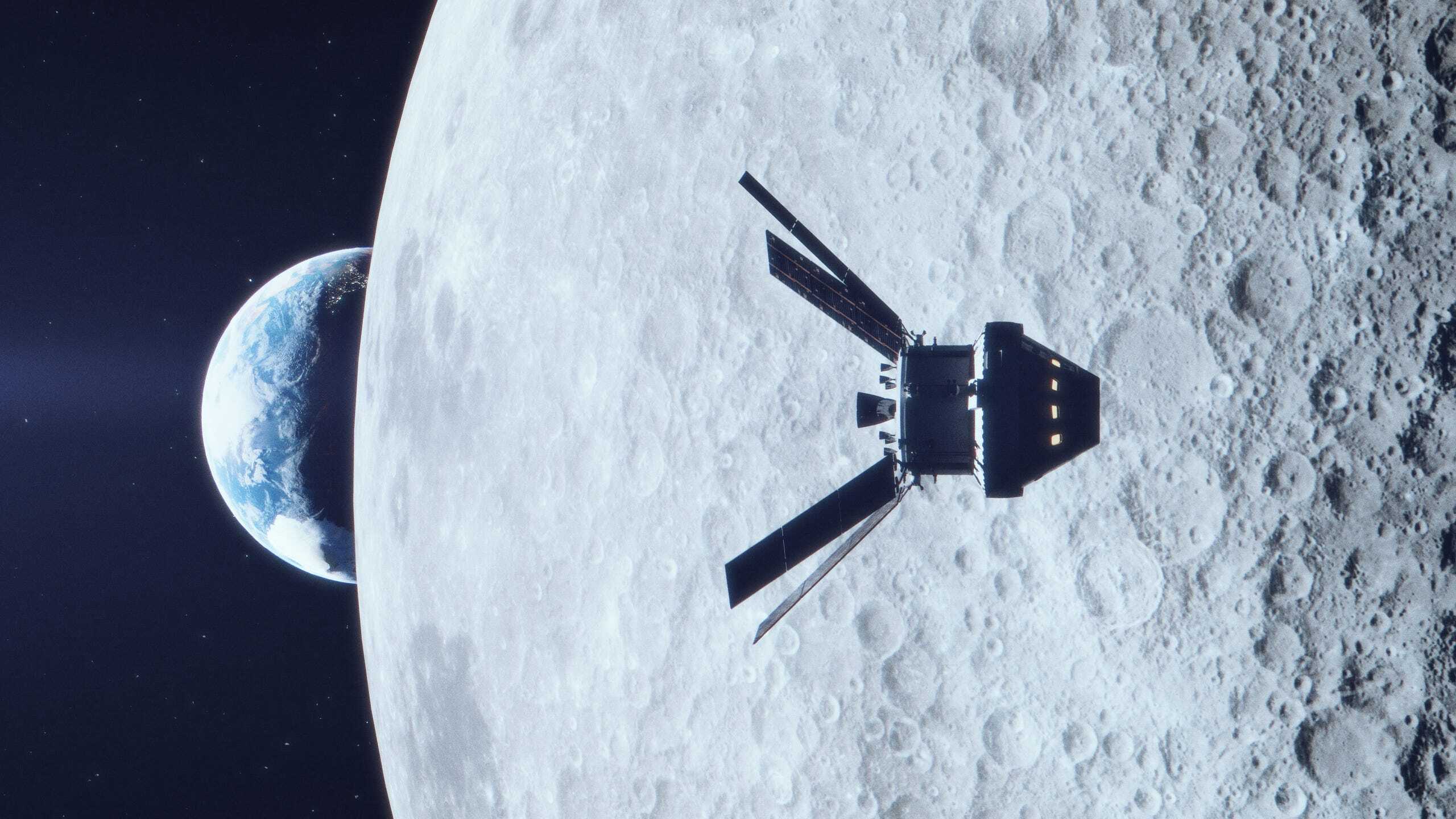
NASA's Orion capsule is in the midst of an uncrewed journey to the moon and back that is expected to last the better part of a month. In that time Orion is set to achieve some truly impressive feats including breaking records and setting some new ones.
Orion will fly incredibly close to the moon's surface for a gravitational assist and fling itself into a new lunar orbit called a Distant Retrograde Orbit setting it up to become the furthest distance from Earth any human-rated spacecraft has ever achieved.
Orion will also travel faster and return to Earth hotter than any other spacecraft humans have ever traveled in.
At 1:47 a.m. EST on Wednesday, Nov. 16, Orion began its moon-bound mission atop NASA's massive 322-foot Space Launch System rocket as it launched for the very first time from Kennedy Space Center's Launch Complex 39-B in Florida. Then the clock started ticking for the Artemis I mission.
Although uncrewed, the Artemis I Orion capsule is outfitted with a slew of experiments that will capture data about the experiences that future astronauts can expect while traversing space to reach our closest solar system neighbor.
“Artemis I is a true stress test of the Orion spacecraft in the deep space environment,” Mike Sarafin, NASA's Artemis Mission Manager said in a release. “Without crew aboard the first mission, (a Distant Retrograde Orbit) allows Orion to spend more time in deep space for a rigorous mission to ensure spacecraft systems, like guidance, navigation, communication, power, thermal control, and others are ready to keep astronauts safe on future crewed missions.”
Many of Orion's upcoming milestones will be significant and NASA will cover them live both online and on TV.
What's coming up for Orion:
Mission Days 6-9, Monday, Nov. 21: After an outbound journey of about six days Orion will arrive at the moon. It will complete a powered fly-by maneuver and orbit close to the lunar surface coming within about 80 miles. There it will spend a few days completing checkouts and gathering data while orbiting the moon.
Mission Day 10, Friday, Nov. 25: Orion will perform an insertion burn that will utilize lunar gravity to fling into a new orbit called a Distant Retrograde Orbit. This specialized orbit will help propel Orion farther from Earth than any other human-rated spacecraft.
Mission Day 11, Saturday, Nov. 26: Orion will surpass the record set by NASA's Apollo 13 mission as the furthest distance a human-rated spacecraft has ever flown in deep space. The maximum distance of the Artemis I mission is expected to reach about 298,565 miles from Earth.
Mission Day 16, Thursday, Dec. 1: Orion will complete a maneuver to depart the Distant Retrograde Orbit.
Mission Day 20, Dec. 5: Orion will complete another powered fly-by maneuver positioning it on its second closest approach to the lunar surface. This will set up the spacecraft to begin its lunar orbit exit plan and chart its path back home for a splash landing on Earth.
Mission Day 26, Dec. 11: Orion will reenter the Earth's atmosphere, descend under a parachute canopy, and splash down in the Pacific Ocean off the coast of California. Once crews collect the capsule aboard a U.S. Navy recovery ship it will mark the conclusion of the Artemis I mission.
Artemis I is just the first in a series of moon missions that NASA has planned over the next decade which includes landing the first woman and person of color on the moon.
Orion's next lunar journey, Artemis II, will be a crewed variant of the Artemis I demonstration mission and can be expected sometime in 2024. NASA hasn't yet decided on the astronauts who will crew the first human mission to the moon since 1972.
Artemis III which will involve a landing on the moon is slated to happen sometime before 2030.
Upcoming Artemis I mission milestones:
- Monday, Nov. 21 - Day 6 Orion flyby of the moon and closest approach to the lunar surface at approximately 80 miles
- Friday, Nov. 25 - Day 10 Orion burn to enter lunar Distant Retrograde Orbit
- Saturday, Nov. 26 - Day 11 Orion surpasses Apollo 13's distance from Earth record
- Sunday, Nov. 27 - Day 13 Orion reaches maximum distance from Earth at approximately 298,565 miles
- Monday, Dec. 5 - Day 20 Orion begins the return trip to Earth
- Sunday, Dec. 11 - Day 26 Orion splashdown in the Pacific Ocean
Quelle: Florida Today
----
Update: 20.11.2022
.
Lockheed Martin Space: designed and built by us, snapped this selfie using the camera on one of the solar array wings IN DEEP SPACE WHILE FLYING TO THE MOON!
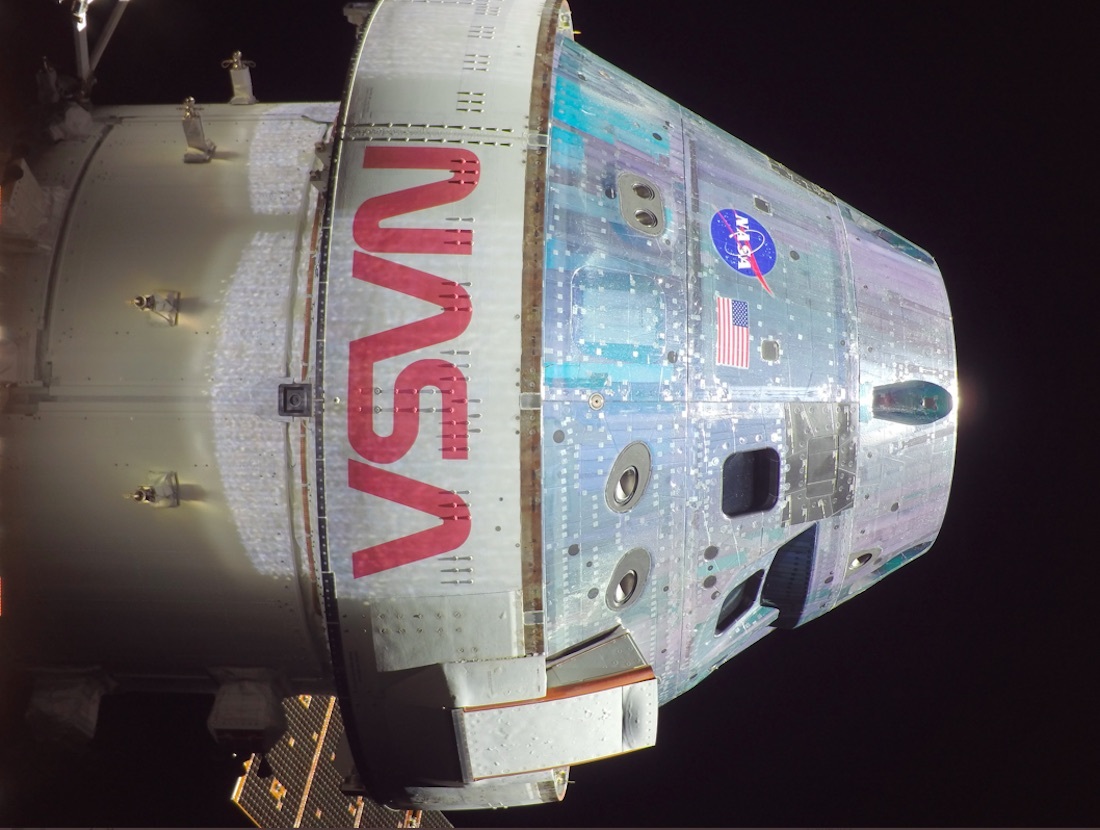
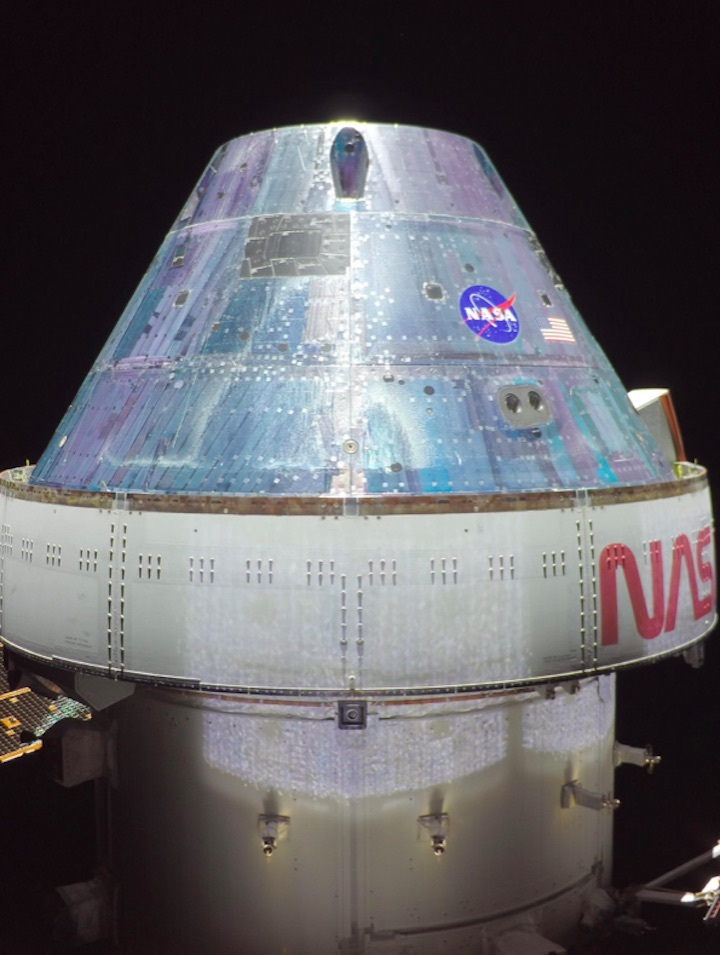
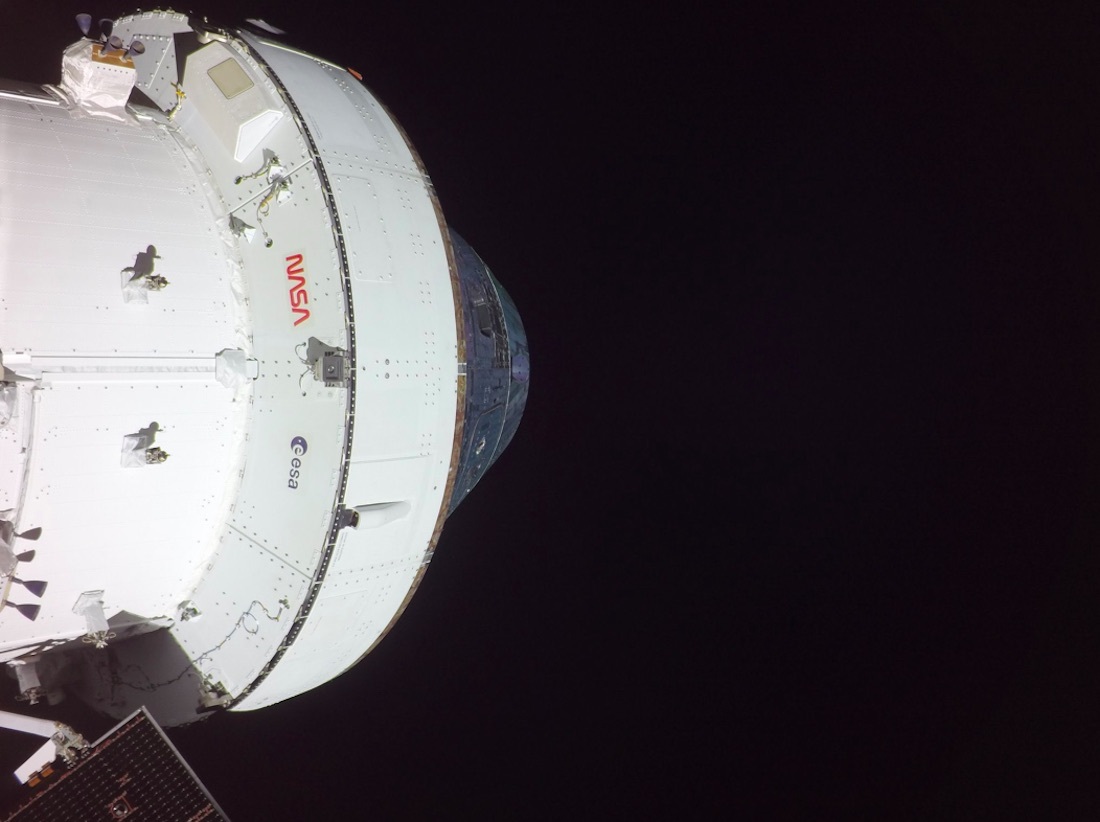
Quelle: Lockheed Martin
+++
During Artemis I, NASA’s Space Launch System (SLS) rocket will send the agency’s Orion spacecraft on a trek 40,000 miles beyond the Moon before returning to Earth. To capture the journey, the rocket and spacecraft are equipped with cameras that will collect valuable engineering data and share a unique perspective of humanity’s return to the Moon.
There are 24 cameras on the rocket and spacecraft – eight on SLS and 16 on Orion – to document essential mission events including liftoff, ascent, solar array deployment, external rocket inspections, landing and recovery, and capture images of Earth and the Moon.
On the rocket, four cameras around the engine section point up toward Orion, two cameras at the intertank by the top of boosters will capture booster separation, and two cameras on the launch vehicle stage adapter will capture core stage separation. The eight cameras will cycle through a preprogrammed sequence during launch and ascent.
On Orion, an external camera mounted on the crew module adapter will show the SLS rocket’s ascent, providing the “rocket cam” view the public often sees during launches. Another camera will provide a view of service module panel jettison and solar array wing deployment. Four cameras attached to the spacecraft’s solar array wings on the service module will help engineers assess the overall health of the outside of Orion and can capture a selfie view of the spacecraft with the Earth or Moon in the background.
“Each of Orion’s four solar array wings has a commercial off-the-shelf camera mounted at the tip that has been highly modified for use in space, providing a view of the spacecraft exterior,” said David Melendrez, imagery integration lead for the Orion Program at NASA’s Johnson Space Center in Houston.
The arrays can adjust their position relative to the rest of the spacecraft, which will optimize the collection of sunlight converted into electricity to power Orion. This also allows flight controllers in the Mission Control Center at NASA Johnson to point the cameras at different parts of the spacecraft for inspections and to document its surroundings, including the Earth and Moon.
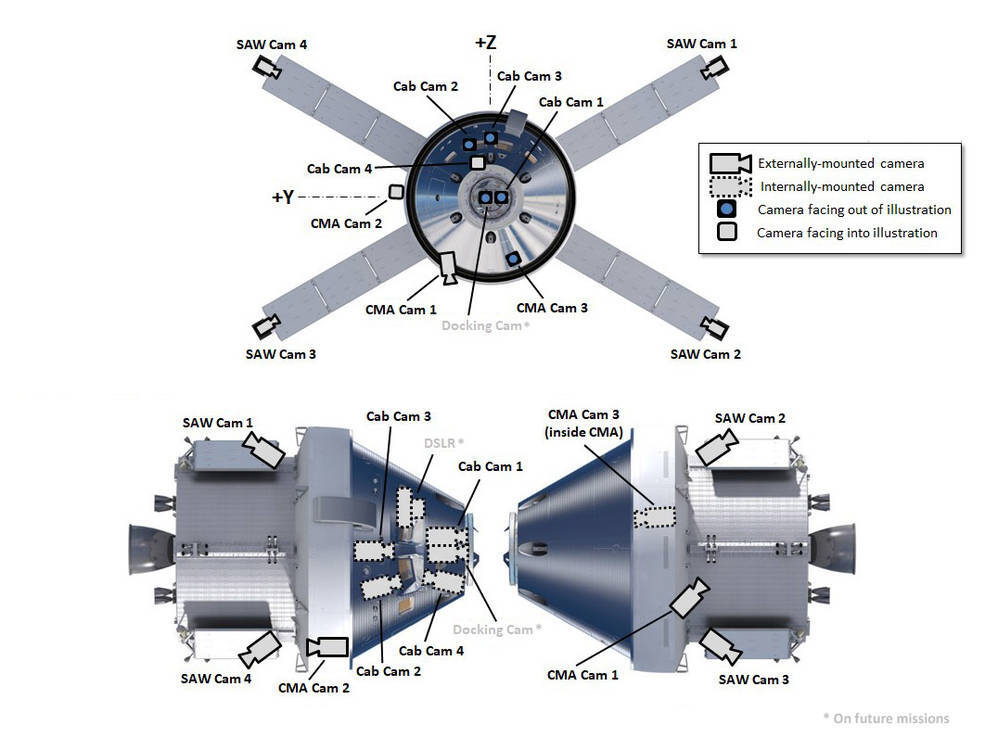
A specialized camera on the crew module adapter used for optical navigation and to help pinpoint Orion’s location in deep space will be used to collect imagery of the Moon during Orion’s closest approach to the lunar surface. Also affixed to the crew module adapter but pointed inward, another camera is positioned to capture imagery of Orion’s heat shield after the crew module separates from the service module before its re-entry into Earth’s atmosphere.
Inside the spacecraft, three more wireless cameras can capture the perspectives astronauts will have on future Artemis missions, with one camera looking out the front pilot window and a second looking over the shoulder of the commander seat, where the instrument panel will be located on future missions. A third in-cabin camera will look out the top hatch window to provide views of launch abort system jettison during ascent as well as parachute deployment during landing and recovery.
There are also two external high-speed cameras dedicated to monitoring parachute operations, which technicians will download and process after the flight.
The images and video collected by the Orion cameras will come in a variety of formats, ranging from standard-definition to high-definition and up to 4K. Each is tailored for a specific use and dependent on the bandwidth available during the mission to send to Earth or recorded on board to be analyzed after the mission ends. Due to bandwidth limitations on the spacecraft that prioritize transmitting critical data to the ground, livestream video quality will be lower than the onboard recordings. As a result, some of the highest quality views may not be received until well after they are recorded and can be downlinked.
The field of view of each camera has been optimized to look at the spacecraft, not deep space, and imagery for the Artemis I flight will depend on a variety of factors such as lighting, spacecraft orientation, and communication capabilities during different mission phases.
“A lot of folks have an impression of Earthrise based on the classic Apollo 8 shot,” Melendrez said. “Images captured during the mission will be different than what humanity saw during Apollo missions, but capturing milestone events such as Earthrise, Orion’s farthest distance from Earth, and lunar flyby will be a high priority.”
Orion also will carry cameras that are part of a technology demonstration, called Callisto. The Callisto payload includes three in-cabin cameras that will be used to test video conferencing capabilities and may enhance the public’s ability to imagine themselves inside Orion.
Through Artemis missions, NASA will land the first woman and the first person of color on the Moon, paving the way for a long-term lunar presence, and serving as a steppingstone to send astronauts to Mars.
Quelle: NASA
----
Update: 21.11.2022
.
Monday, Nov. 21
5:15 a.m. – Artemis I coverage of the outbound powered flyby of the Moon by the Orion spacecraft
12:25 p.m. – ISS Expedition 68 in-flight educational event with the Uniformed Services University of the Health Sciences in Bethesda, Maryland and NASA astronauts Nicole Mann and Frank Rubio
5 p.m. – Artemis I briefing post-outbound powered flyby of the Moon by the Orion spacecraft
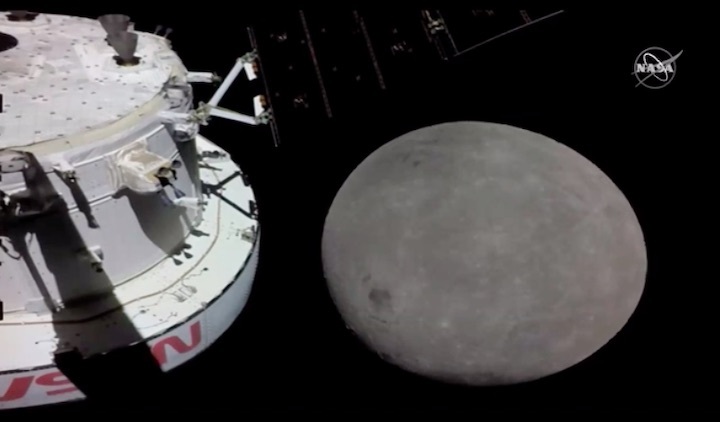
+++ LIVE Screenshots of NASA TV
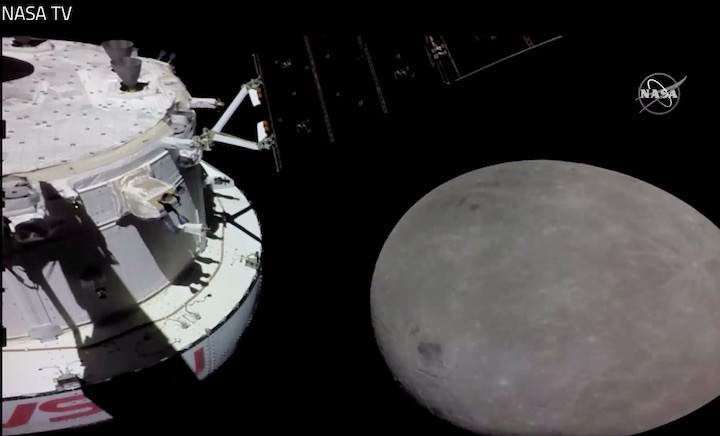
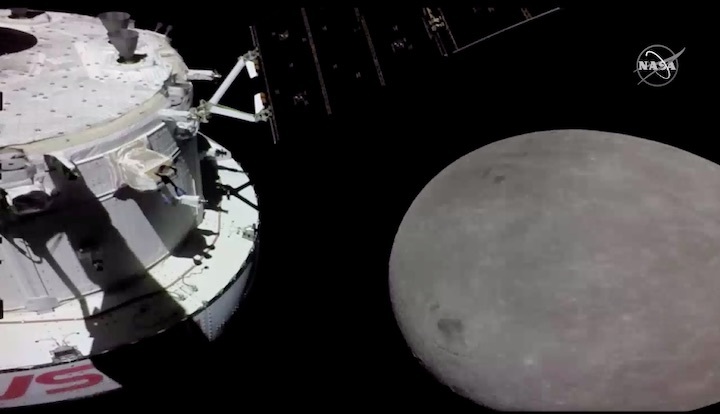

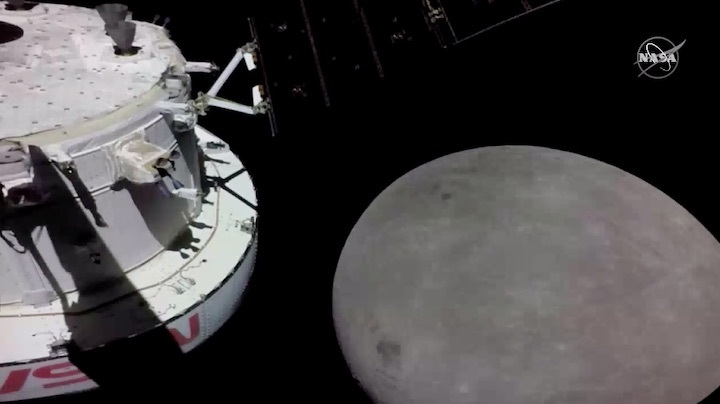
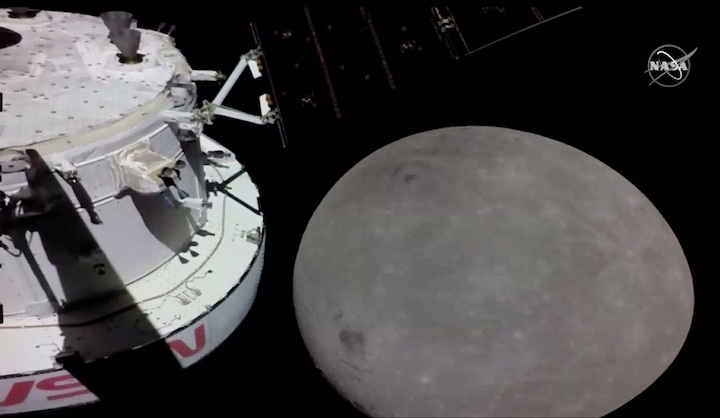
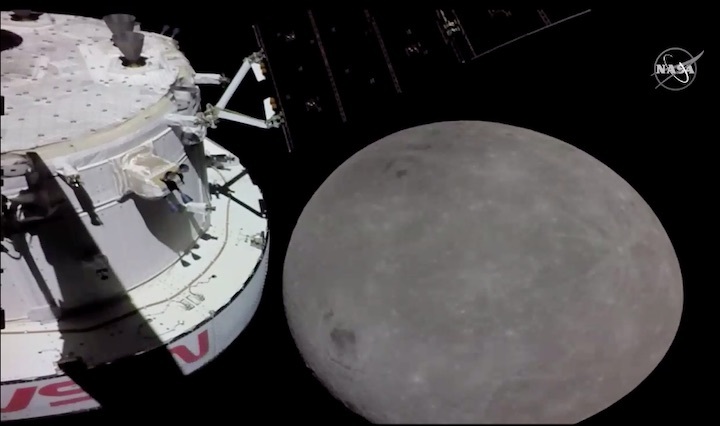
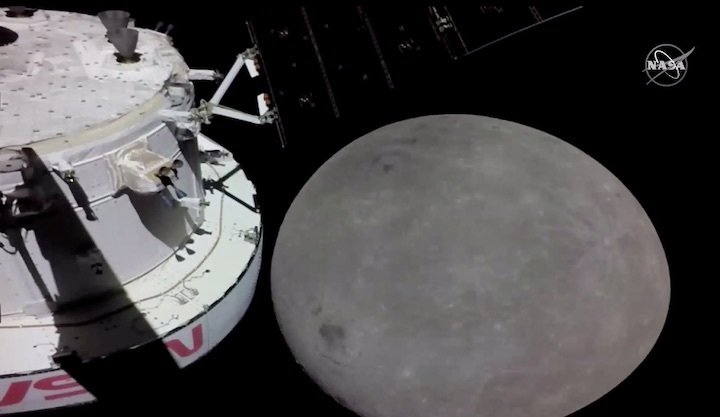
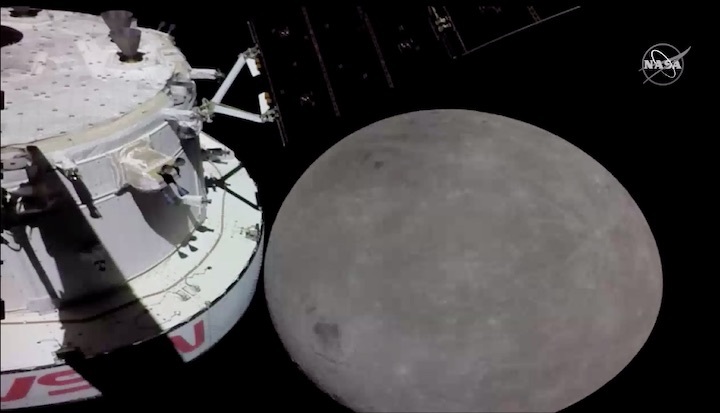
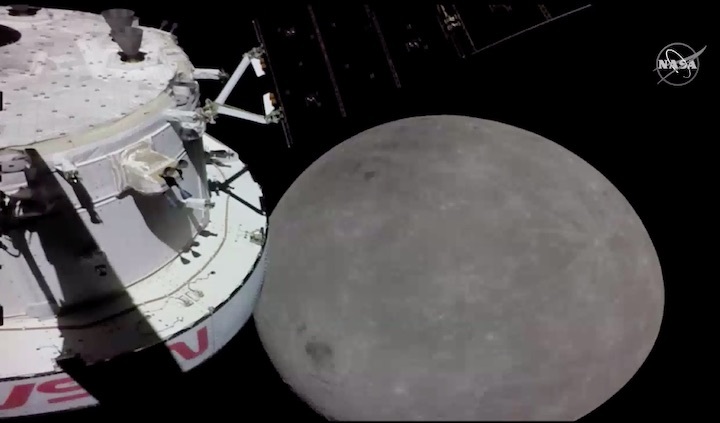
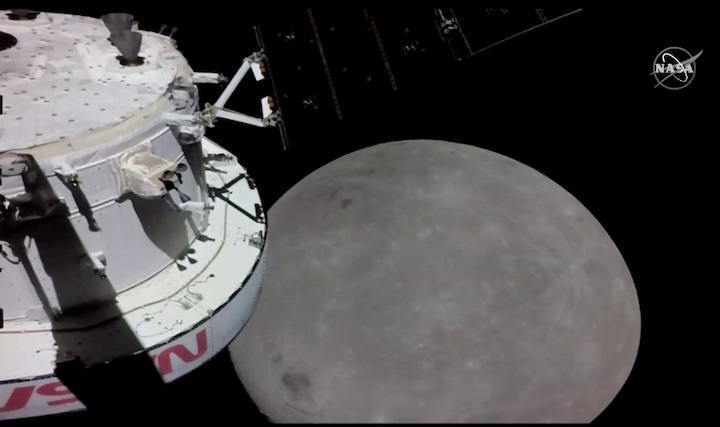
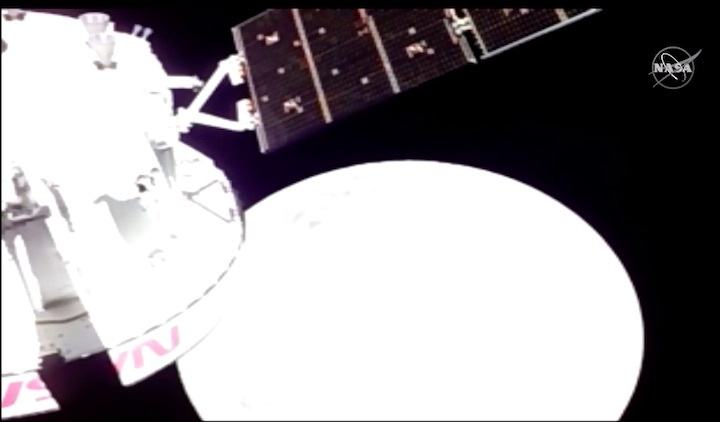
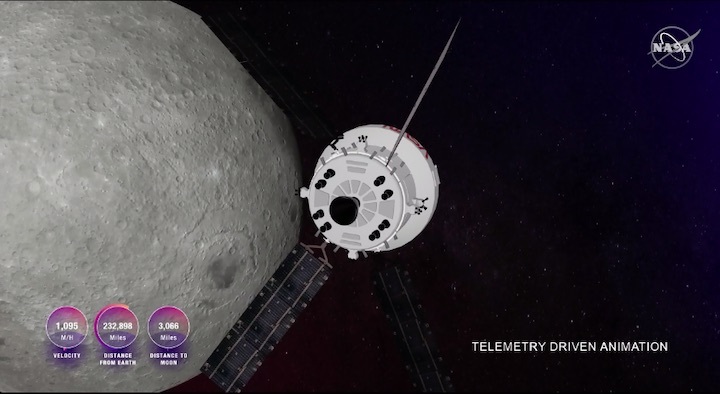
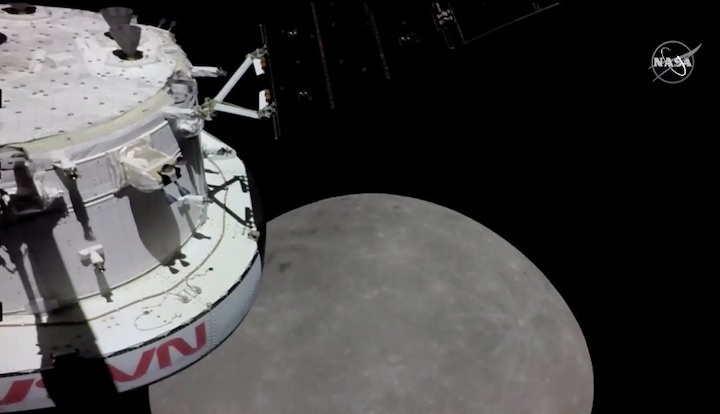
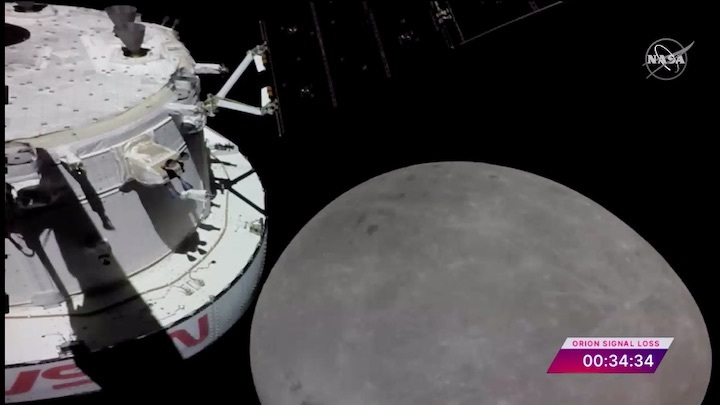
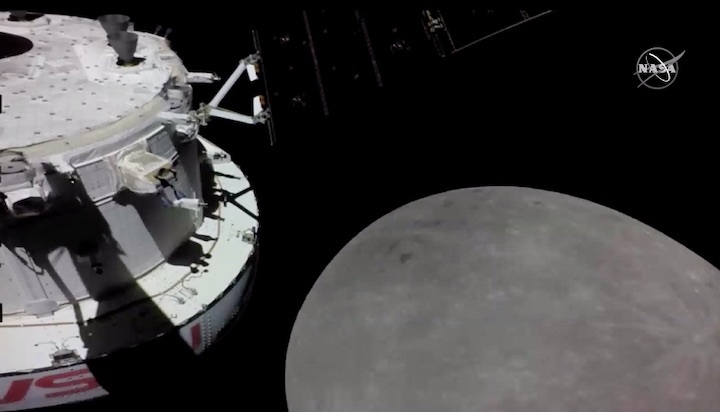
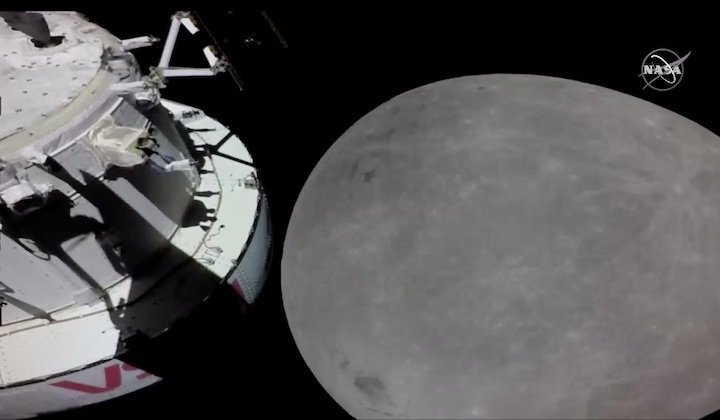
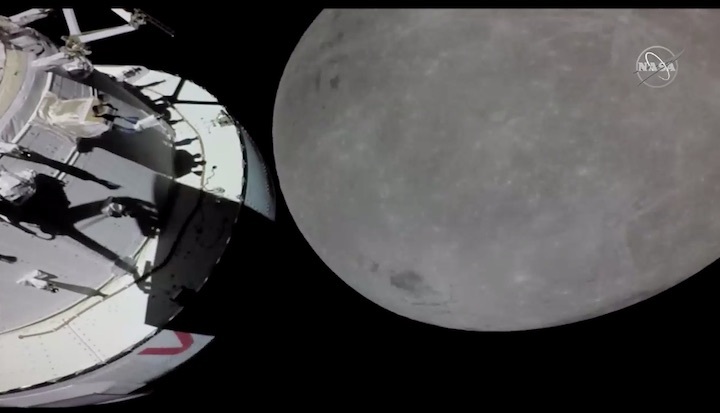
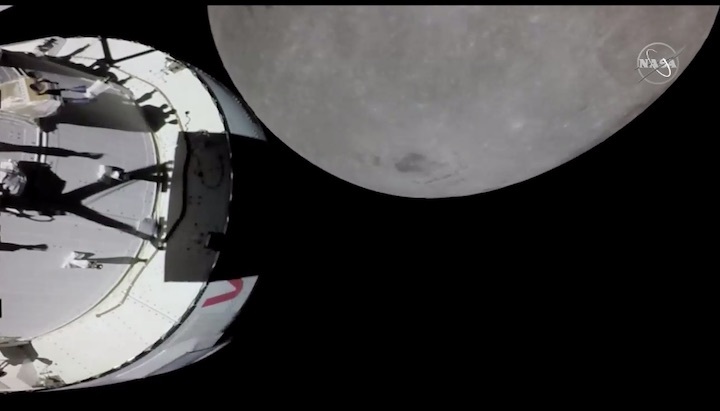
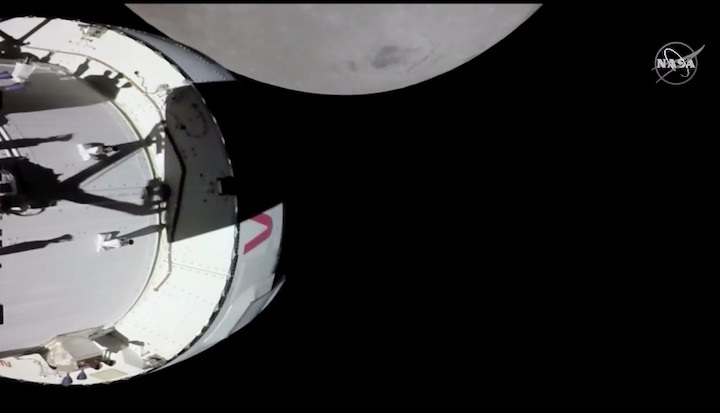
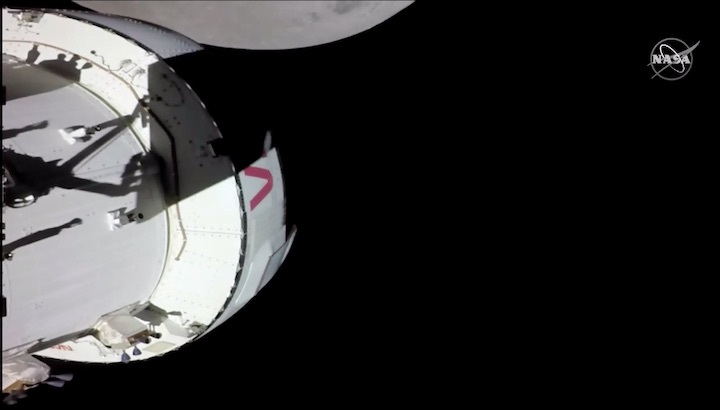
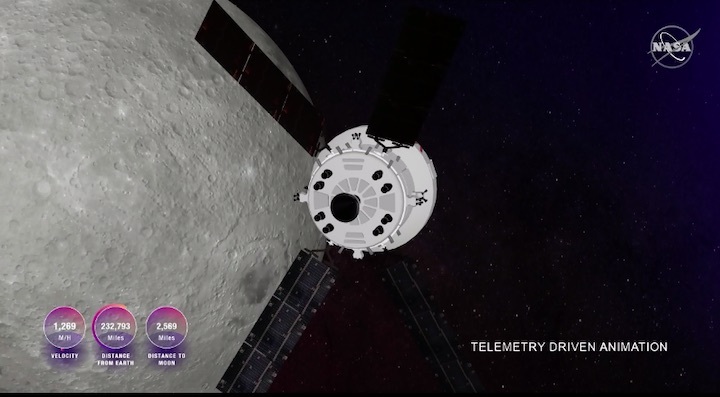
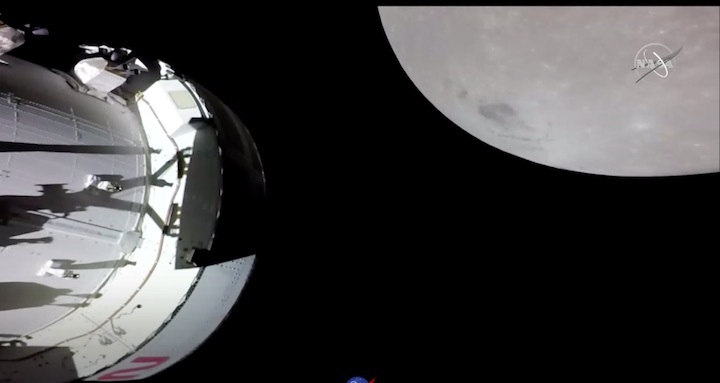

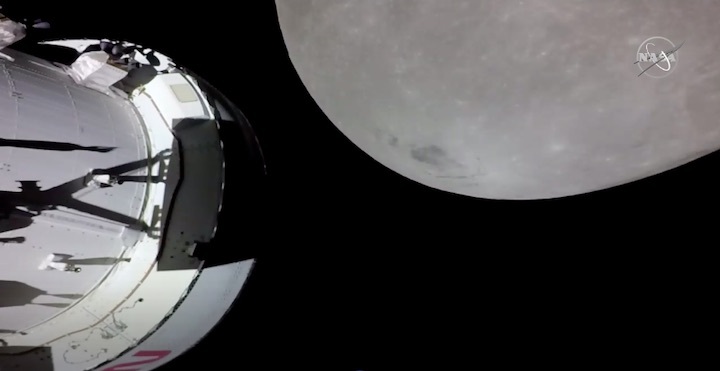
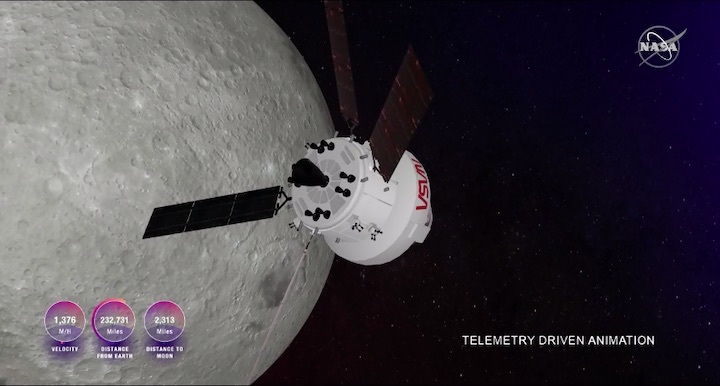

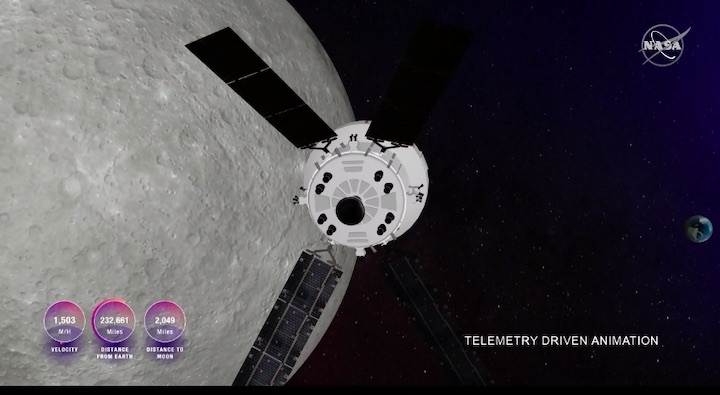
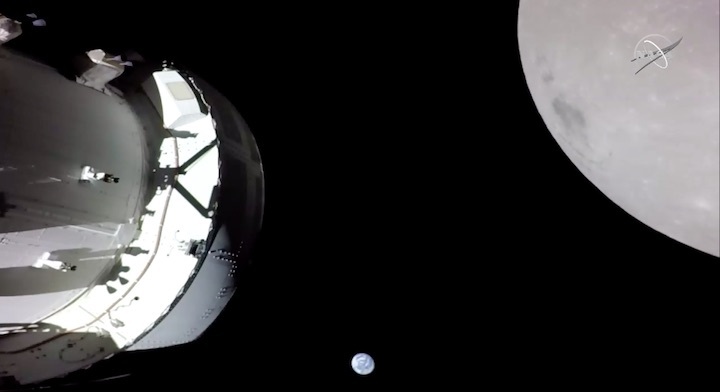
+++ 13.25 MEZ
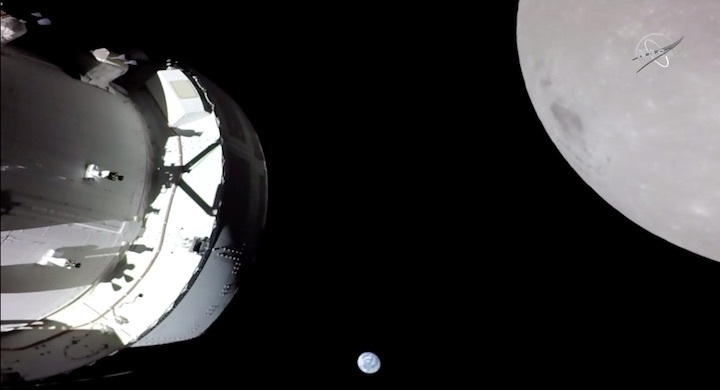
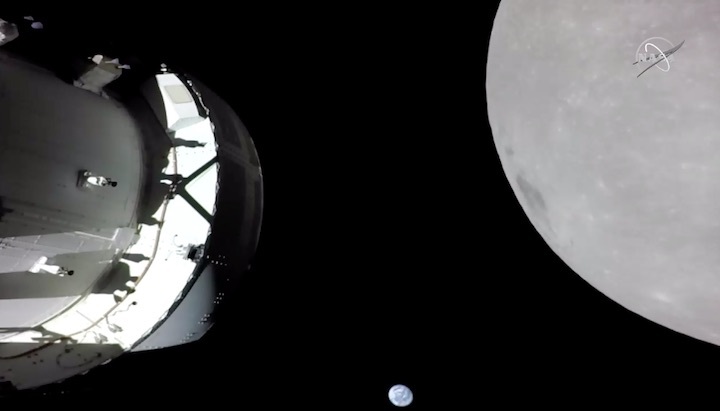
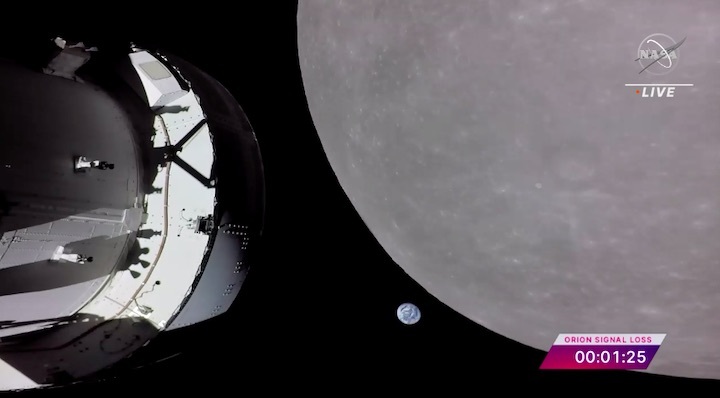
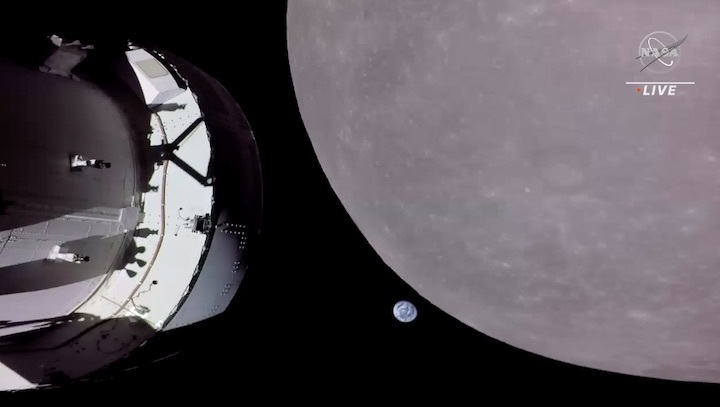
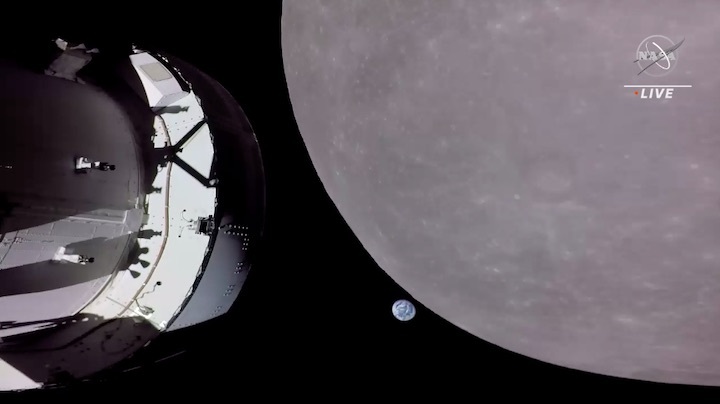
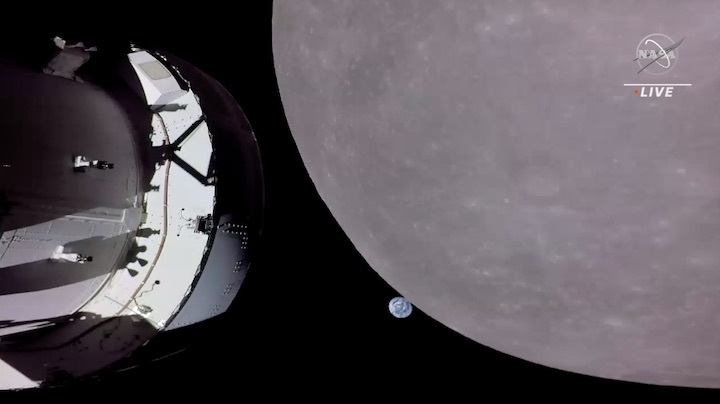
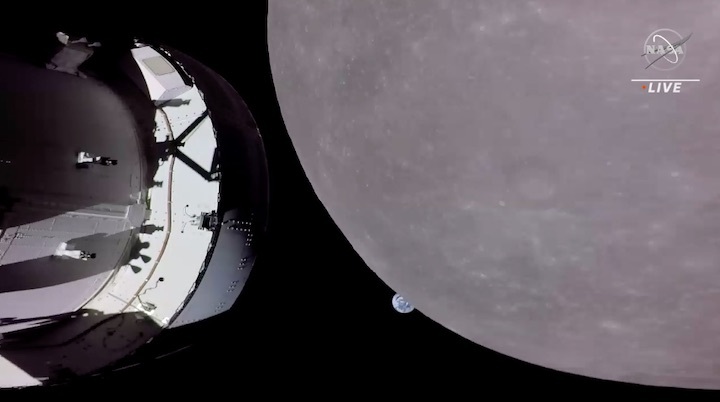
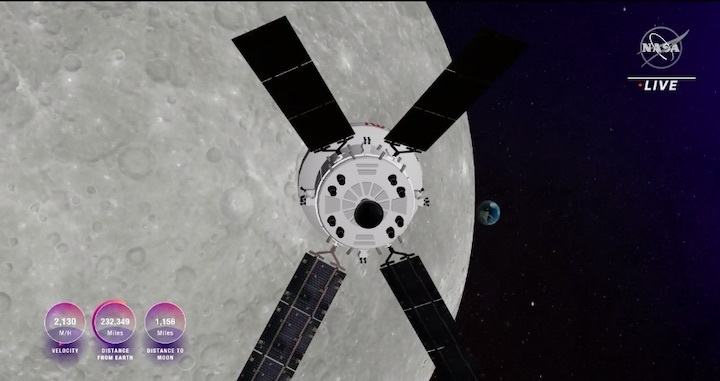
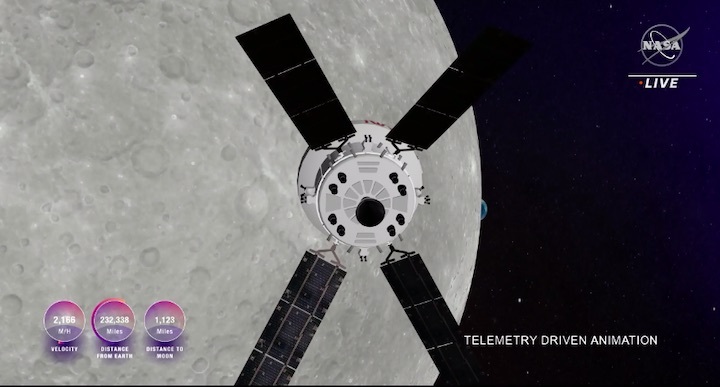

+++13:47 MEZ
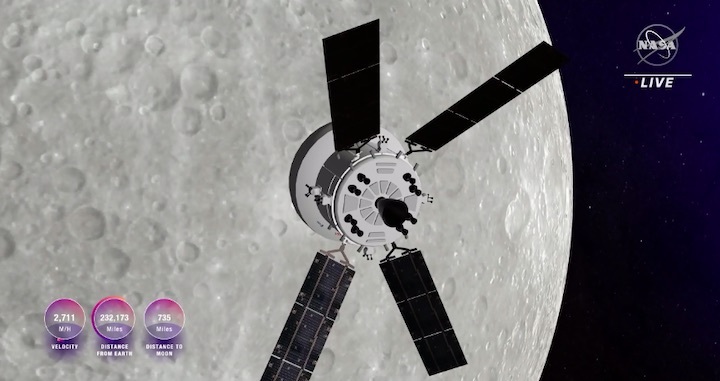
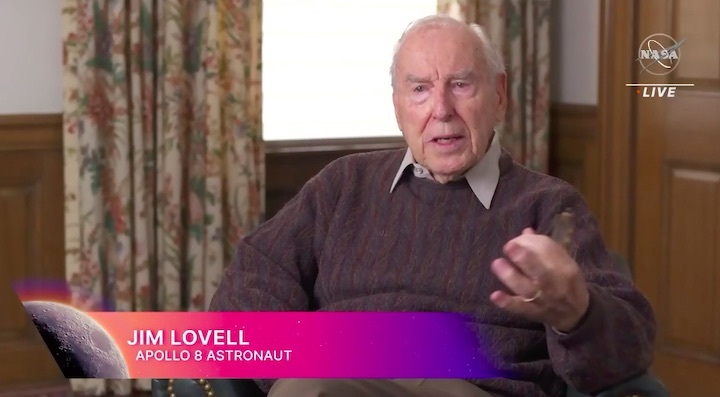
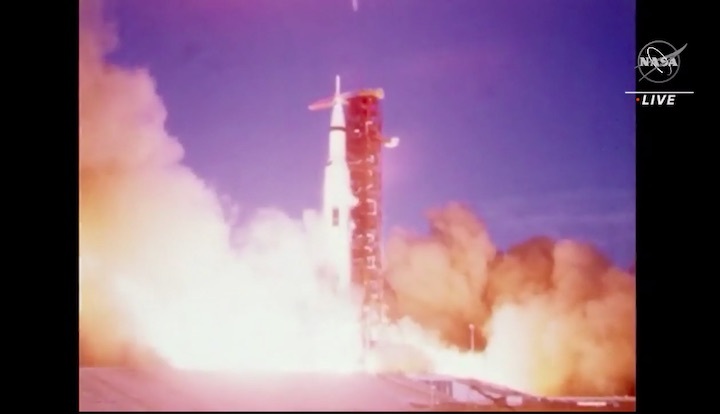
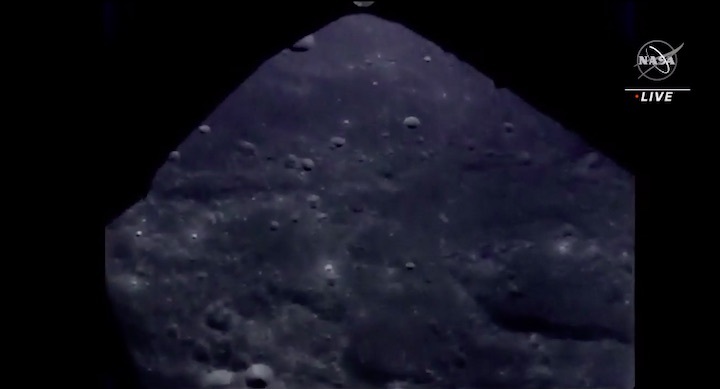
Rückblick auf Apollo-8 Mission
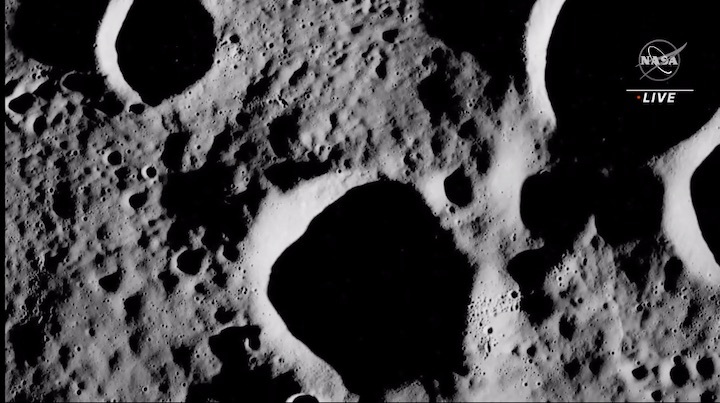

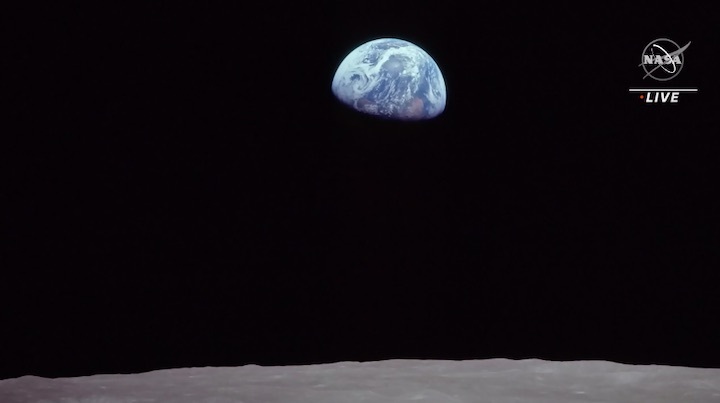
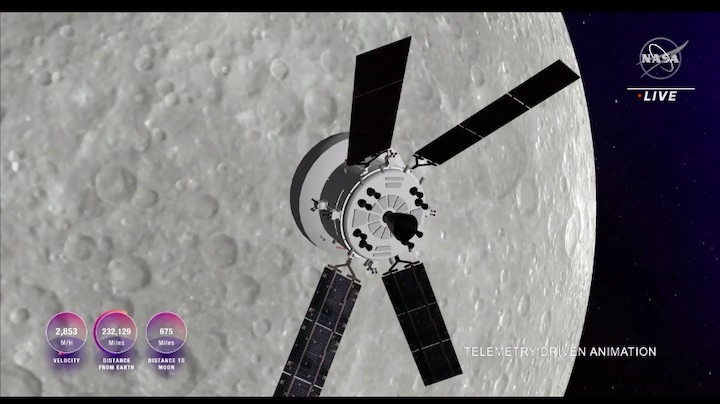
+++14:12 MEZ
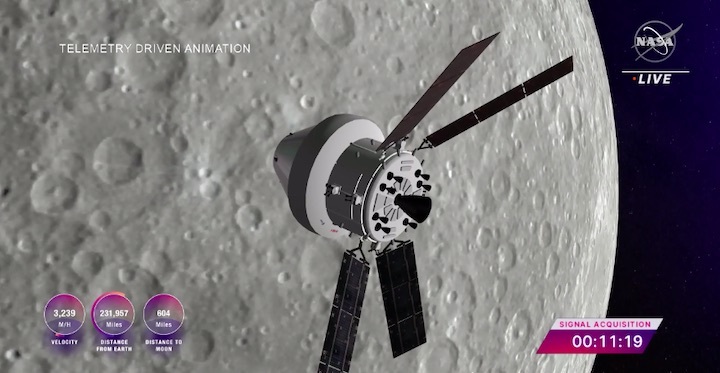
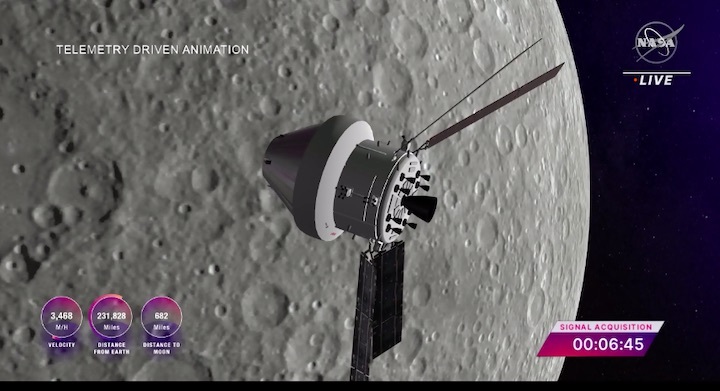
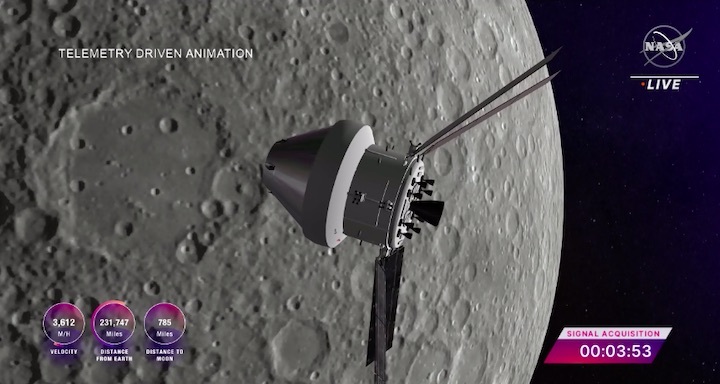
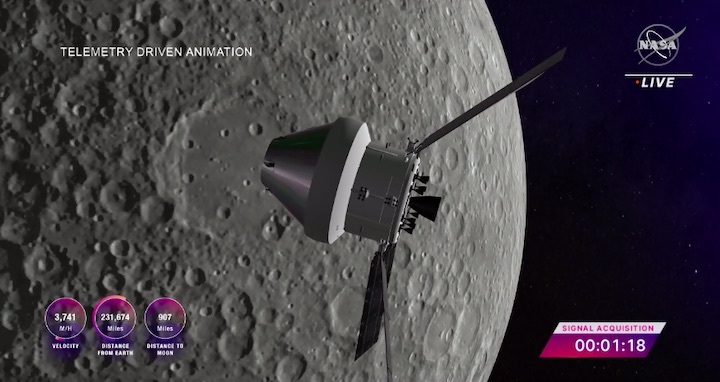
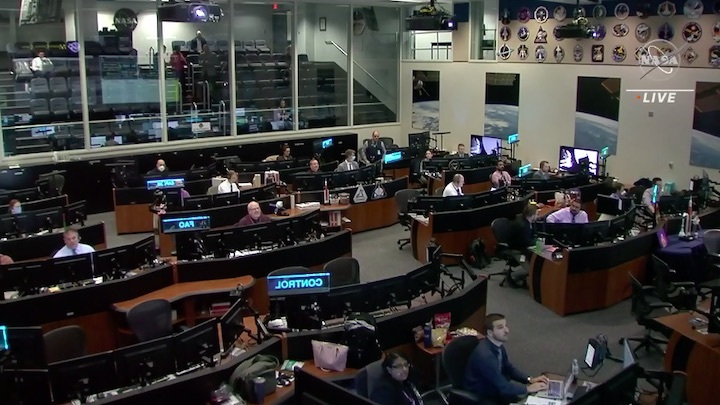
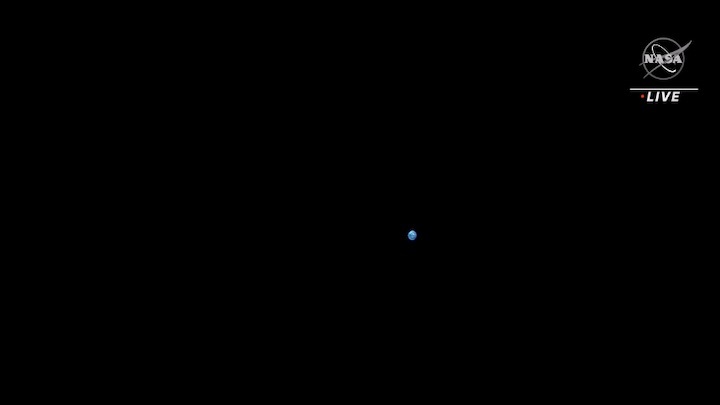


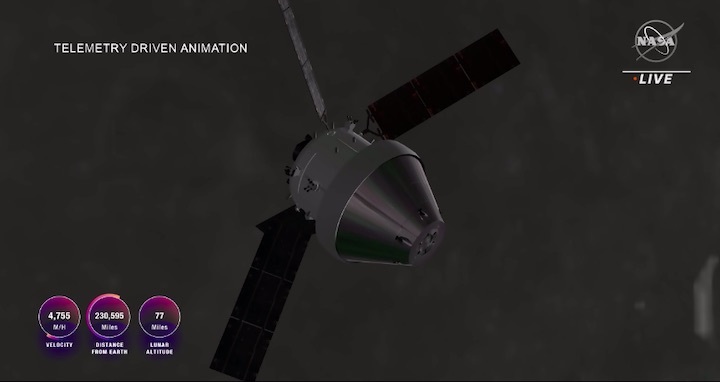
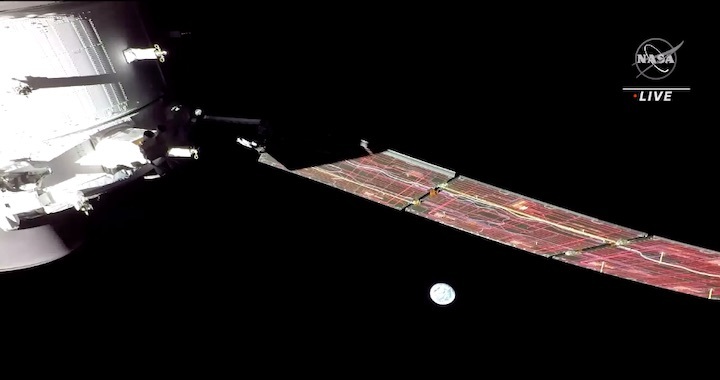
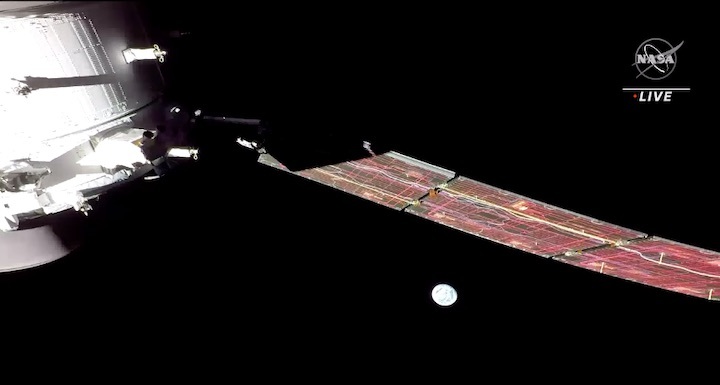
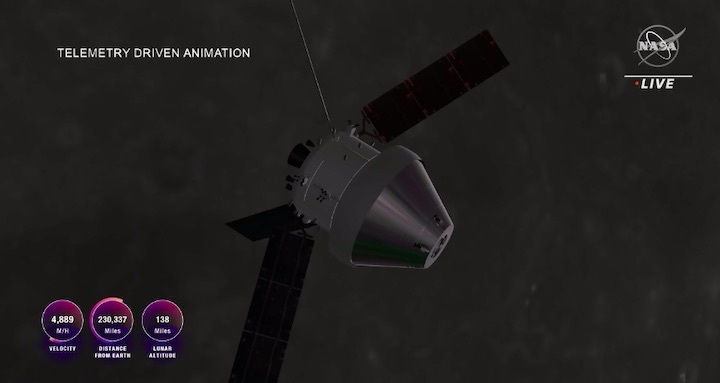
+++14:45 MEZ


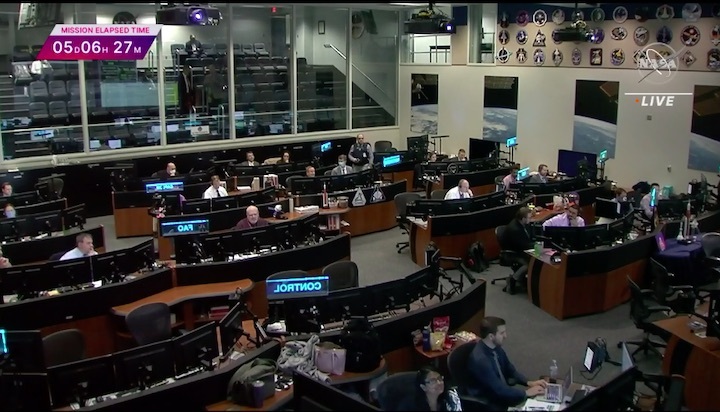

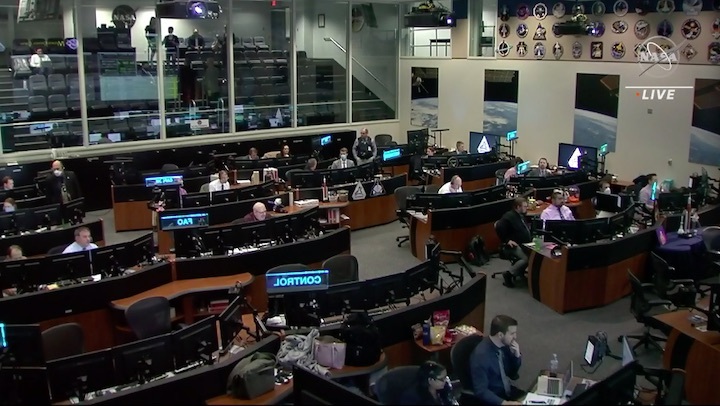
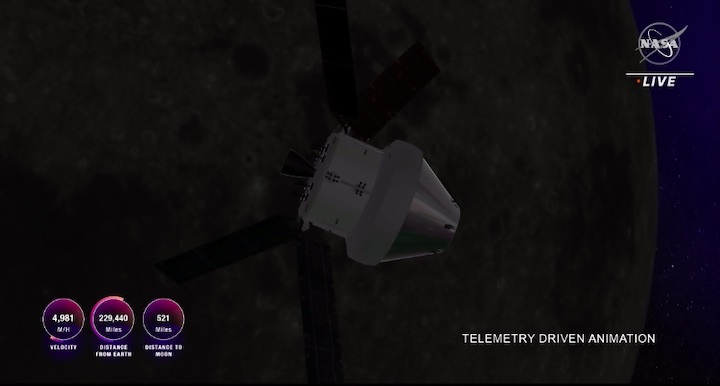
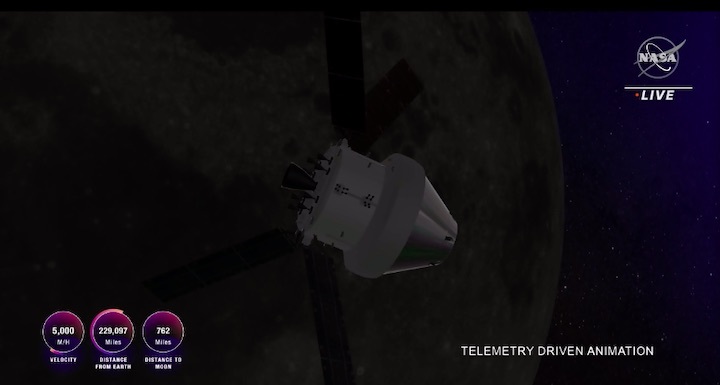
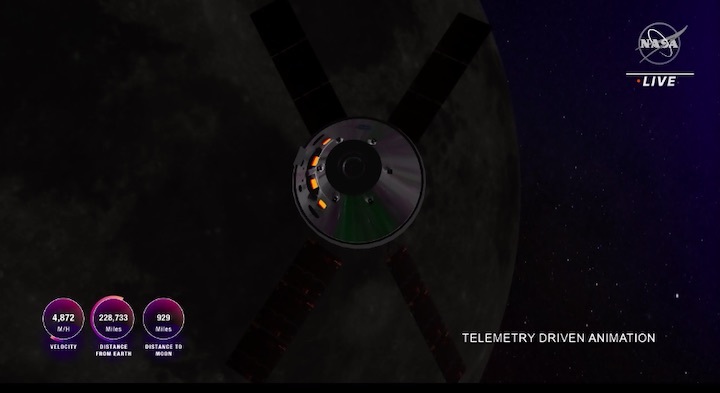
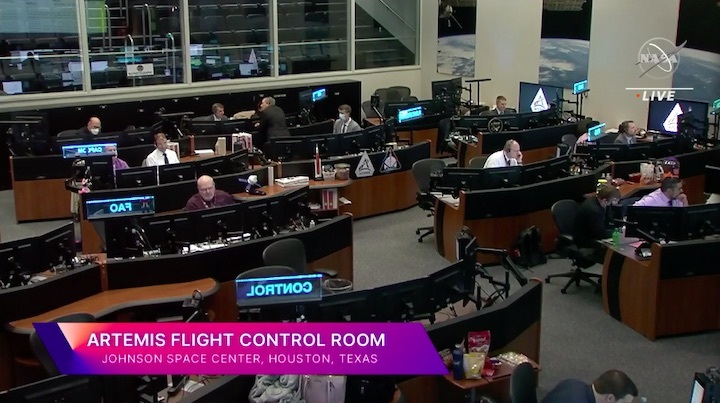
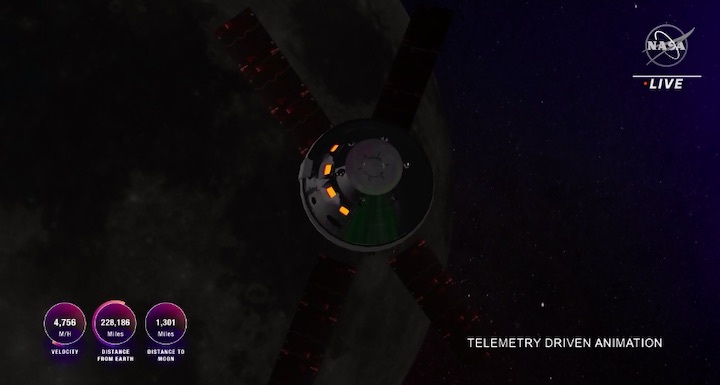
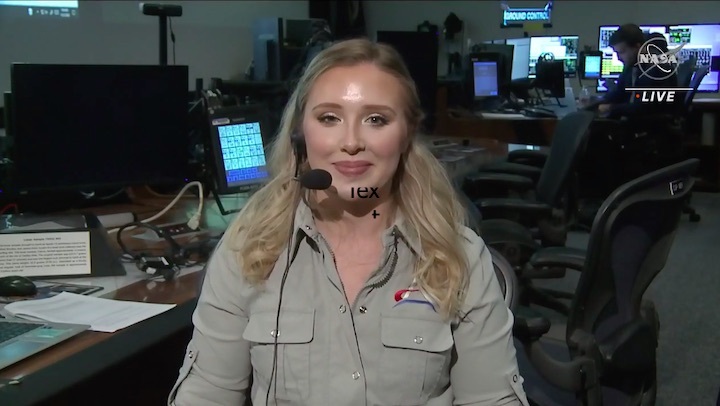
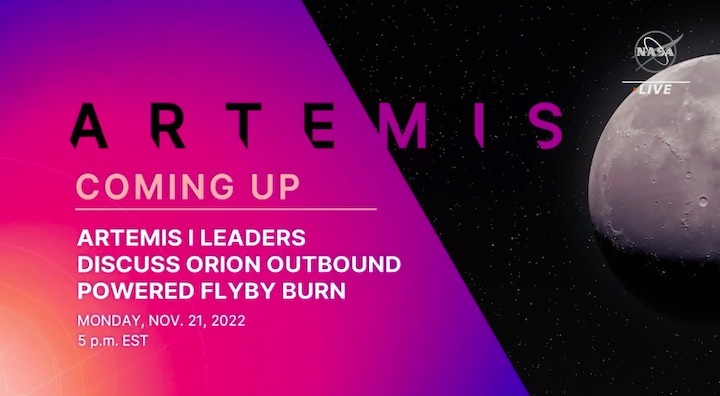
Quelle: NASA TV LIVE
